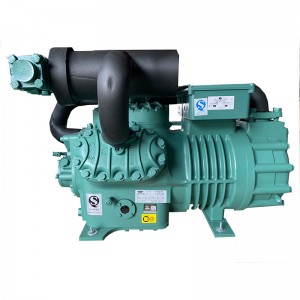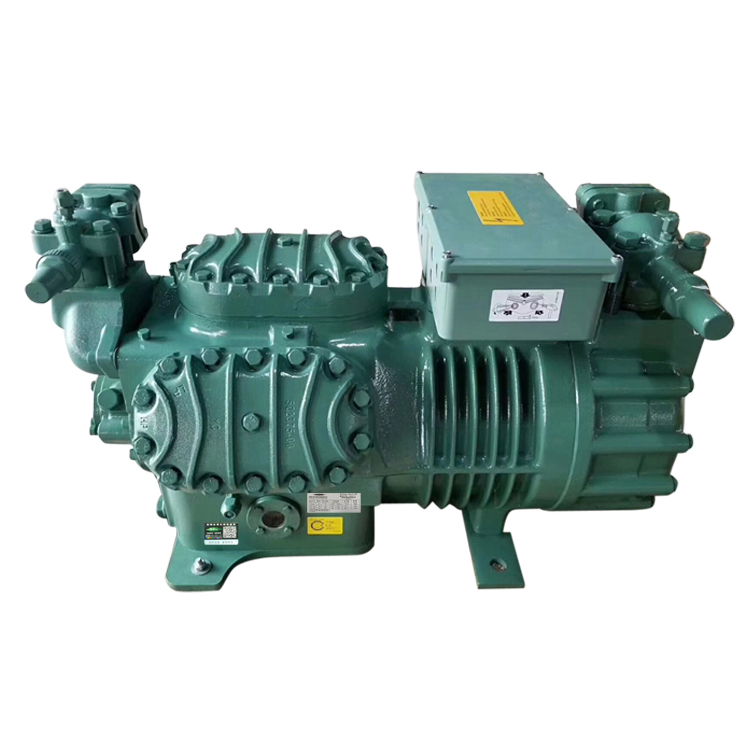1) The cooling capacity of the compressor should be able to meet the peak load requirements of the cold storage production season, that is, the cooling capacity of the compressor should be greater than or equal to the mechanical load. Generally, when selecting a compressor, the condensing temperature is determined according to the cooling water temperature (or air temperature) in the hottest season of the year, and the operating condition of the compressor is determined by the condensing temperature and evaporation temperature. However, the peak load of cold storage production is not necessarily just in the season with the highest temperature. The cooling water temperature (air temperature) in autumn, winter and spring is relatively low (except for deep well water), and the condensation temperature will also decrease accordingly. The cooling capacity of the compressor will decrease. has seen an increase. Therefore, the selection of compressors should consider the seasonal correction factor.

2) For small cold storage, such as living service cold storage, a single compressor can be used. For large-capacity cold storage and freezing rooms with large cold processing capacity, the number of compressors should not be less than two. The total refrigerating capacity shall be subject to meeting the production requirements, and the backup is generally not considered.
3) There should not be more than two series of refrigeration compressors. If there are only two compressors, the same series should be used to facilitate control, management and exchange of spare parts.
4) For compressors equipped with different evaporation temperature systems, the possibility of mutual backup between units should also be properly considered.
5) If the compressor is equipped with an energy adjustment device, the cooling capacity of the single unit can be adjusted to a large extent, but it is only suitable for the adjustment of load fluctuations during operation, and it is not suitable for adjustment of seasonal load changes. For load adjustment of seasonal load or production capacity change, a machine suitable for the refrigeration capacity should be configured separately to achieve better energy-saving effect.
6) In order to meet the requirements of the production process, it is often necessary for the refrigeration cycle to obtain a lower evaporation temperature. In order to improve the gas transmission coefficient and indication efficiency of the compressor and ensure the safe operation of the compressor, a two-stage compression refrigeration cycle should be adopted. When the pressure ratio Pk/P0 of the ammonia refrigeration system is greater than 8, two-stage compression is adopted; when the pressure ratio Pk/P0 of the Freon system is greater than 10, two-stage compression is adopted.
7) The working conditions of the refrigeration compressor shall not exceed the operating conditions specified by the manufacturer or the compressor service conditions stipulated by the national standard.
Guangxi Cooler Refrigeration Equipment Co.,Ltd.
Tel/Whatsapp:+8613367611012
Email:karen02@gxcooler.com
Post time: Feb-21-2023





